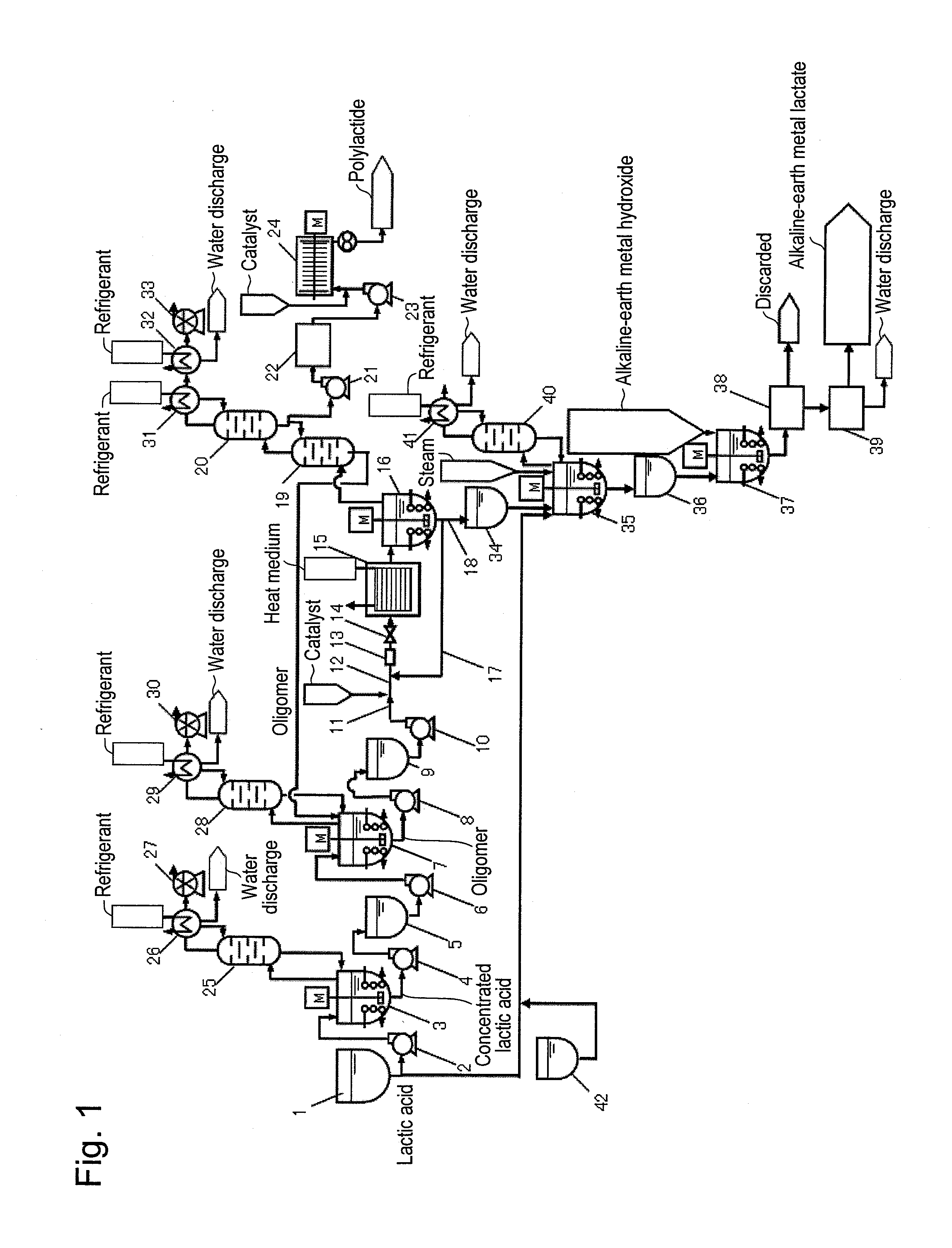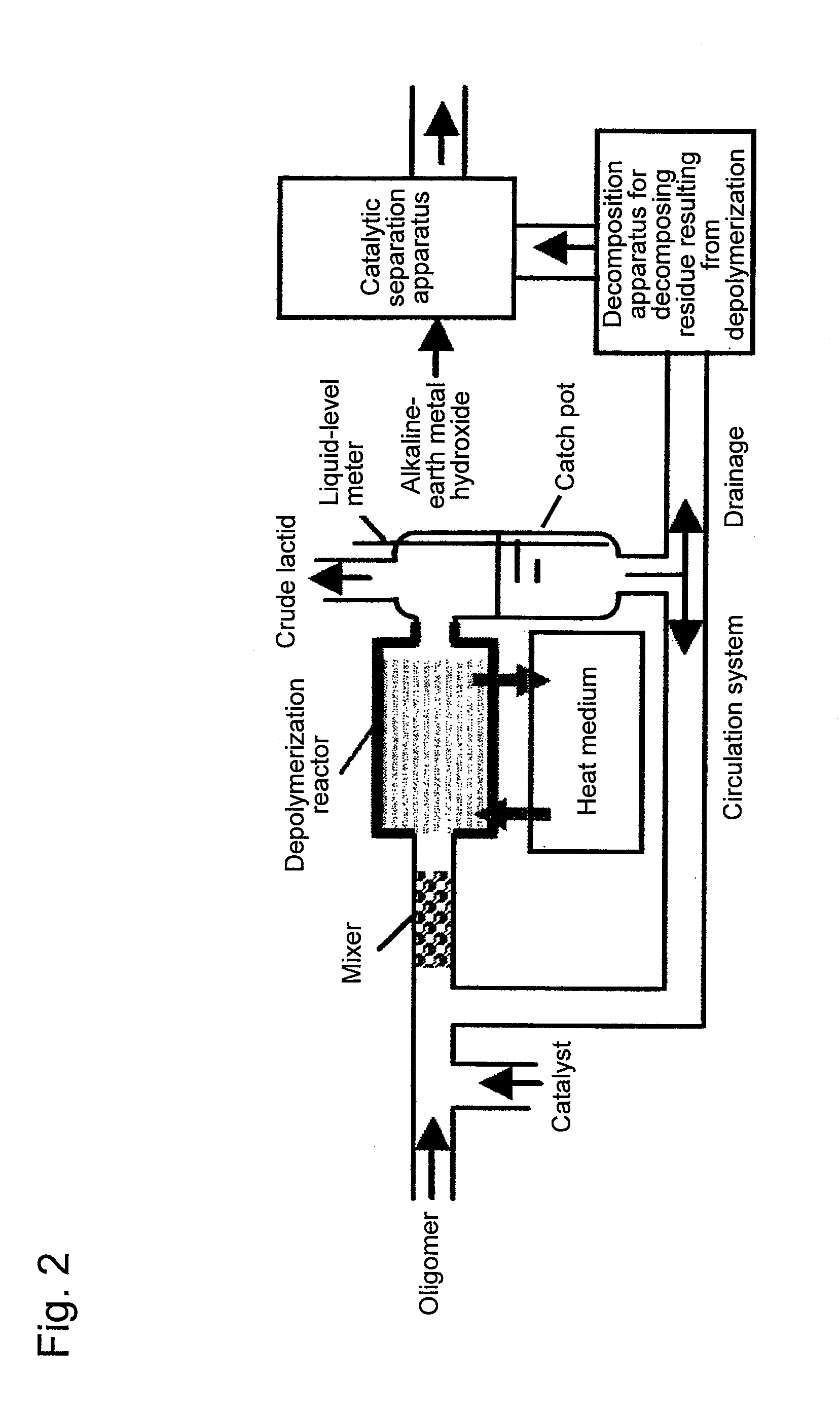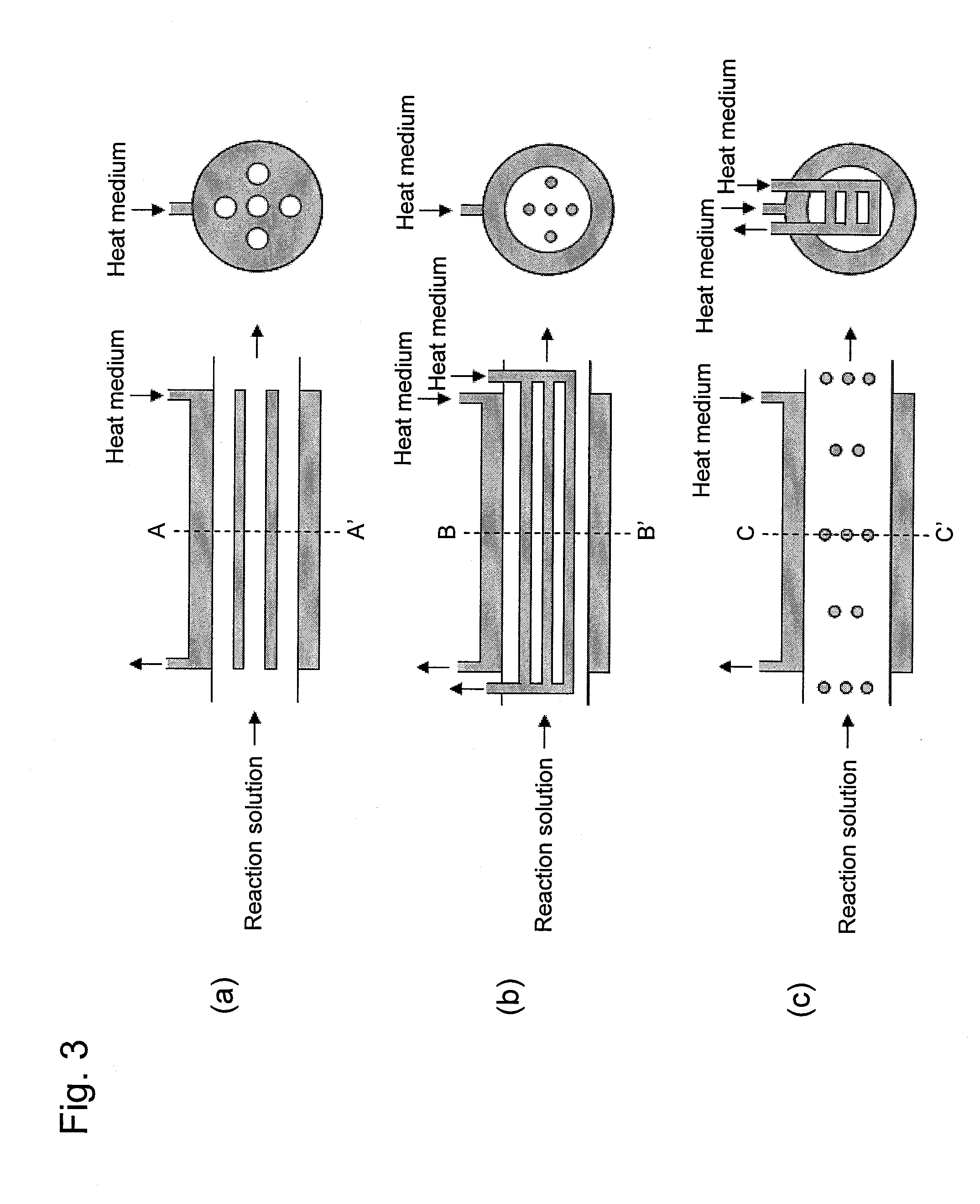System and method for producing polyhydroxycarboxylic acid
- Summary
- Abstract
- Description
- Claims
- Application Information
AI Technical Summary
Benefits of technology
Problems solved by technology
Method used
Image
Examples
example 1
[0050]Polylactide was produced using a system for producing polylactide shown in FIG. 1. A lactic acid oligomer having a number average molecular weight of 630 was added as a raw material to a depolymerization reactor 15. The embodiment of a reaction solution passage and heat medium passages shown in FIG. 3 (b) was employed for the depolymerization reactor 15. The space within the reaction solution passage was depressurized to 10 torr or less at 200° C. Tin 2-ethylhexanoate with a concentration of 0.7 kg / m3 was used as a catalyst for a depolymerization reaction. The retention time of a lactic acid oligomer within the depolymerization reactor 15 was determined to be 15 minutes and the liquid depth within the reaction solution passage was set to be 55 cm. In addition, the lactic acid oligomer retention time was defined by dividing the feed flow-rate of the melted oligomer by the amount (retention amount) of melted oligomer in the depolymerization reactor 15, when the feed flow-rate of...
PUM
| Property | Measurement | Unit |
|---|---|---|
| Pressure | aaaaa | aaaaa |
Abstract
Description
Claims
Application Information
 Login to View More
Login to View More - R&D
- Intellectual Property
- Life Sciences
- Materials
- Tech Scout
- Unparalleled Data Quality
- Higher Quality Content
- 60% Fewer Hallucinations
Browse by: Latest US Patents, China's latest patents, Technical Efficacy Thesaurus, Application Domain, Technology Topic, Popular Technical Reports.
© 2025 PatSnap. All rights reserved.Legal|Privacy policy|Modern Slavery Act Transparency Statement|Sitemap|About US| Contact US: help@patsnap.com



